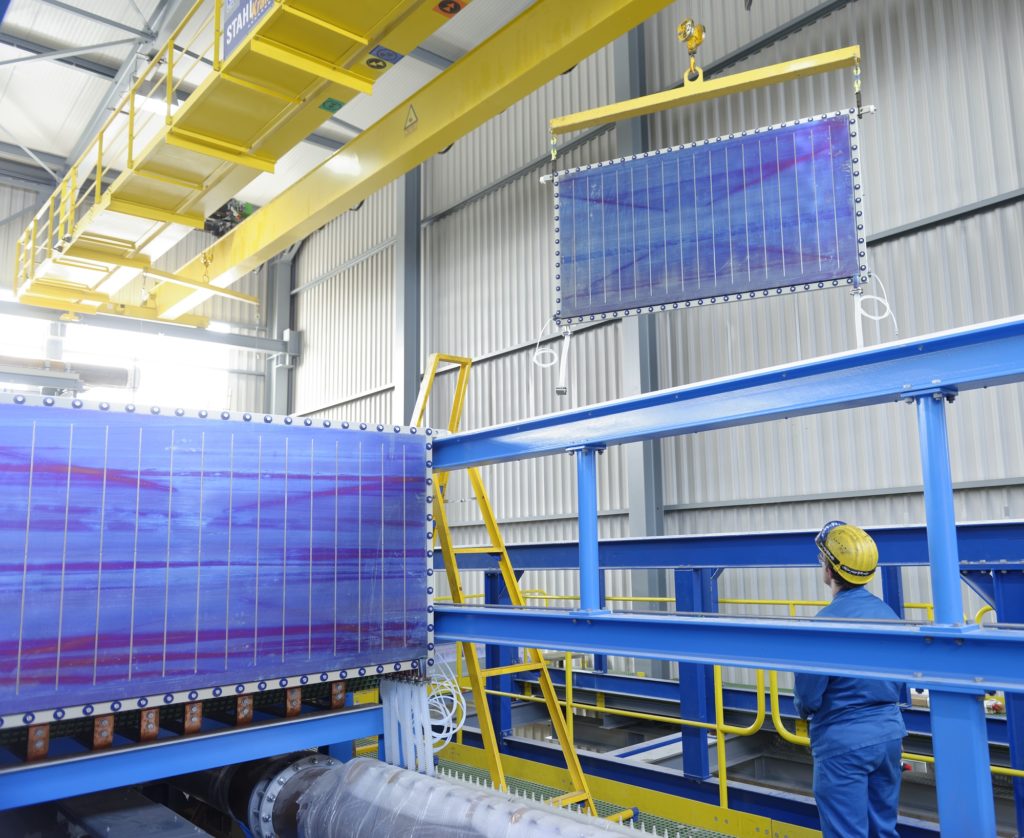thyssenkrupp to expand electrolyser production five-fold
By Julian Atchison on October 11, 2021
thyssenkrupp’s annual production output of 1 GW alkaline water electrolysis cells will expand five-fold, thanks to new funding from Germany’s Federal Ministry of Education and Research.
The H2Giga project aims to not only ramp up production of thyssenkrupp’s 20 MW electrolysis modules via automation & streamlining of existing procedures, but also to develop the next generation of alkaline electrolysis technology:
We have seen a significant shift in the project sizes towards several hundred megawatts to gigawatts in recent months, so that large-volume and automated series production is already in line with market demand today. For these orders of magnitude, simple up scaling is not feasible, but disruptive approaches have to be applied, which are being developed, tested and optimized in individual steps within the framework of this project.
Martina Merz, Chairwoman of the Executive Board of thyssenkrupp AG in the official press release, 7 October 2021
In addition to H2Giga, thyssenkrupp announced funding has been secured for two other important projects: H2Mare (offshore ammonia production), and TransHyDE (ammonia cracking solutions).
Offshore ammonia production
The Offshore wind power to X project is described thusly by thyssenkrupp. Although methanol and methane are included in the project scope, it’s clear ammonia is the focus:
As offshore wind turbines supply significantly greater quantities and more regular power than their onshore counterparts, the direct generation of hydrogen and other power-to-X products holds great potential, since the CO2 and nitrogen required in addition to water can be extracted directly from the air on site.
The production of green ammonia in particular can be decisive here, as its high energy density and simpler storage technology make ammonia the cheaper option in some applications compared to hydrogen, for example as a fuel for ships. In countries with a high potential for the production of hydrogen due to good supply of solar and wind power, for example Australia or Chile, green ammonia is superior to green hydrogen as an energy carrier that is destined for export.
Since ammonia is transported by ship, transportation routes – and therefore costs – would be saved through direct offshore generation by coupling wind turbines with electrolyzers. Moreover, the offshore wind farm sizes make larger production volumes possible, which in turn reduces the selling prices and makes green ammonia more competitive as an energy carrier.
H2Mare outline in the official press release, 7 October 2021
Cracking
And although details on the TransHyDE project are limited in the press release, at our recent Australia conference we were given a first look at what large-scale ammonia cracking setups would look like based on thyssenkrupp’s Uhde® technology.
